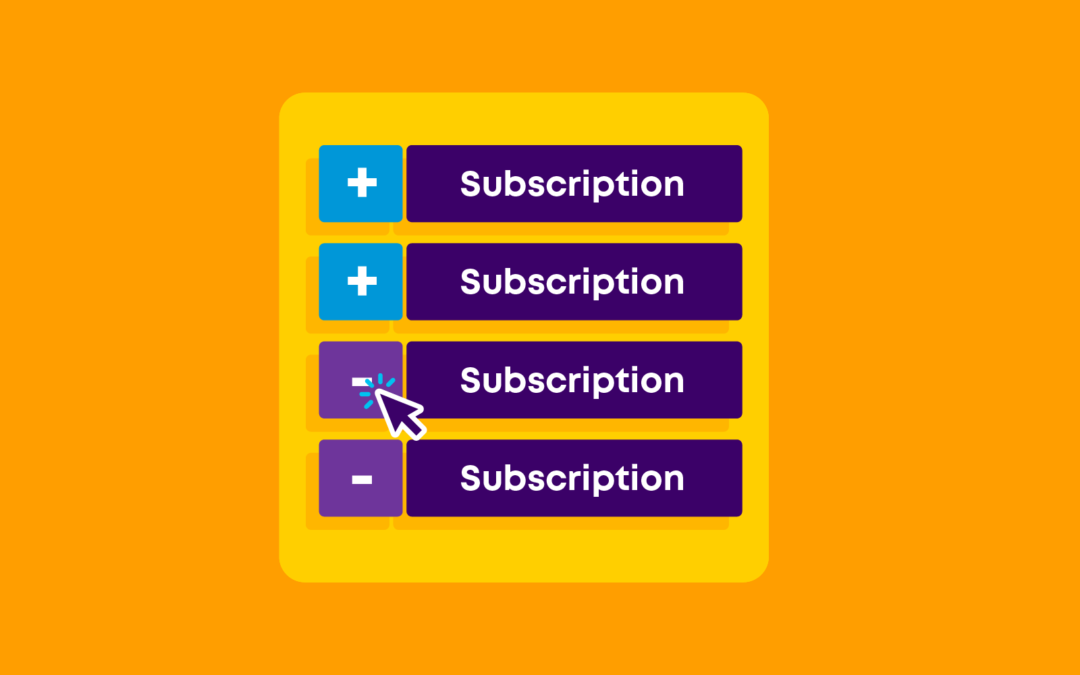Sometimes, it seems like life is nothing more than a series of subscriptions. You’ve got Amazon Prime, Disney+, Netflix, NOW – and that’s just TV and movies. Then you’ve got subscription book clubs, season passes for video games, monthly beauty boxes, and an endless array of subscription apps at your fingertips, tempting you with free trials at the click of a button (don’t forget to cancel these if you don’t actually want the service, or you can end up paying for something you didn’t really want in the first place.
Subscriptions are big business. It makes sense for a company to adopt a subscription model. It works in their favour – why would they charge you once for a product when they can ask for repeating payments?
There’s something about a subscription that seems a lot easier to afford. If someone asks for £100 for hundreds of movies — most of which you’ll definitely never watch — you might stop to think about it. It seems like a lot of money, when you put it like that.
But if someone asks for £7.99, suddenly it doesn’t seem like such a big deal. £7.99 isn’t that much. Sure, you have to pay again next month, and the month after that, but it’s only £7.99. Besides, that’s all going to happen in the future.
Businesses know that we tend to think this way, and they market their subscriptions with consumer behaviour in mind. How many ads have you seen where a subscription is presented as “only £5.99 a month”, or “just £9.99 each month”, as if it’s no big deal.
The thing is, they’re almost right — almost. Whether it’s £5.99, £7.99, or £9.99, it’s not a huge amount of money, if you take it on its own — but you know what comes next. Subscriptions add up over time, and when you have multiple subscriptions, they start to stack.
If you sit down to calculate how much you’re spending on subscriptions, you might start to see how much it really costs. £5.99 here, £7.99 there, another £9.99 for something else — well, that’s over £280 a year. When you get a clear picture of what you’re really paying, it doesn’t seem like such a small amount.
Getting a clear picture of your subscriptions
Your best tool for managing your money and staying on top of expenses is your budget — especially for expenses that stack up when you’re not paying attention. A budget will give you a clear picture of what you’re earning and what you can afford, as well as what you’re spending and how often.
If you haven’t set a budget up for yourself yet, or if you need a refresher on how it’s all done, check out our Budgeting 101 Pathway. Or, if you’re still trying to find a budgeting technique that works for you – Make Budgeting Work For You.
Here are three quick steps to get started with getting a handle on your subscriptions.
Start with a spending goal
As a first step, decide how much you want to be spending on discretionary expenses — that’s entertainment, shopping, and anything that you could survive without if you really had to.
Starting with a goal can help you set a reasonable and realistic target. If you start with what you’re already spending, you might be tempted to stretch your spending beyond what makes the most sense to you. That’s a great way to stress yourself out, and to end up spending more than you really want.
Do a subscription audit
Write down every subscription you have and how much they cost, as well as how often you have to pay.
This doesn’t have to be anything fancy. Just grab a pencil, a scrap of paper, and write a list. You might need to consult your bank statement, check your app store account, or go through your emails, to find all the subscriptions you’ve signed up for.
Compare your subscriptions to your goal
Once you know how much you want to spend, and can compare it to how much you’re actually spending, you might find that you’re spending more on subscriptions than you realised — or you might’ve had a suspicion, but now it’s there in front of you in black and white.
If you’re spending more on subscriptions than you want to spend, or more than you can reasonably afford, it’s time to get started on cancelling some (or all) of them. You might want to consider alternatives, like borrowing books and DVDs from the library, or signing up for free streaming services and events.
When you’ve got a clear picture of what you’re spending, and when you’ve set a clear goal for what you want to spend, you’re well on your way to mastering your money — and to the confidence that comes with it.
Want to learn more? We cover over 80 financial topics in our platform, sign up for your free account to get started

